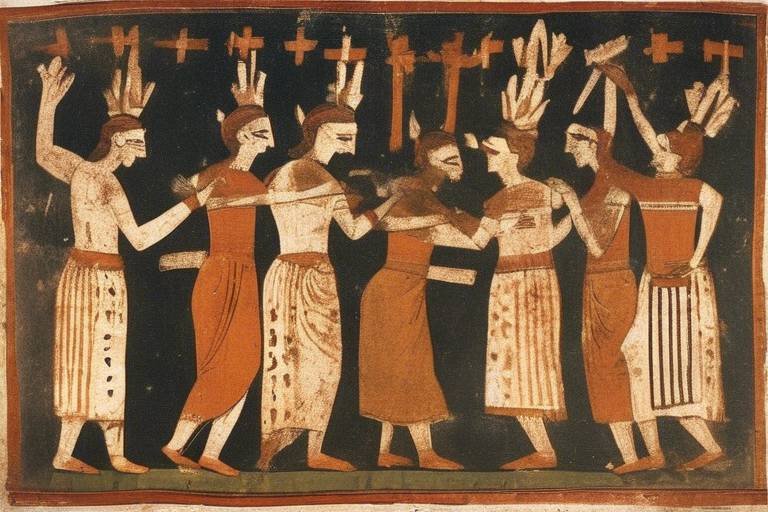The Intersection of Ancient Religions and Astronomy
Exploring the connections between ancient religious beliefs and astronomical observations reveals a fascinating intersection of spirituality and science. Ancient civilizations, such as the Egyptians, Babylonians, and Mayans, deeply intertwined their religious practices with celestial events, showcasing a profound relationship between the earthly and the cosmic realms. By delving into the historical narratives of these cultures, we uncover a rich tapestry of myths, rituals, and architectural marvels that reflect the enduring influence of astronomy on ancient religious beliefs.
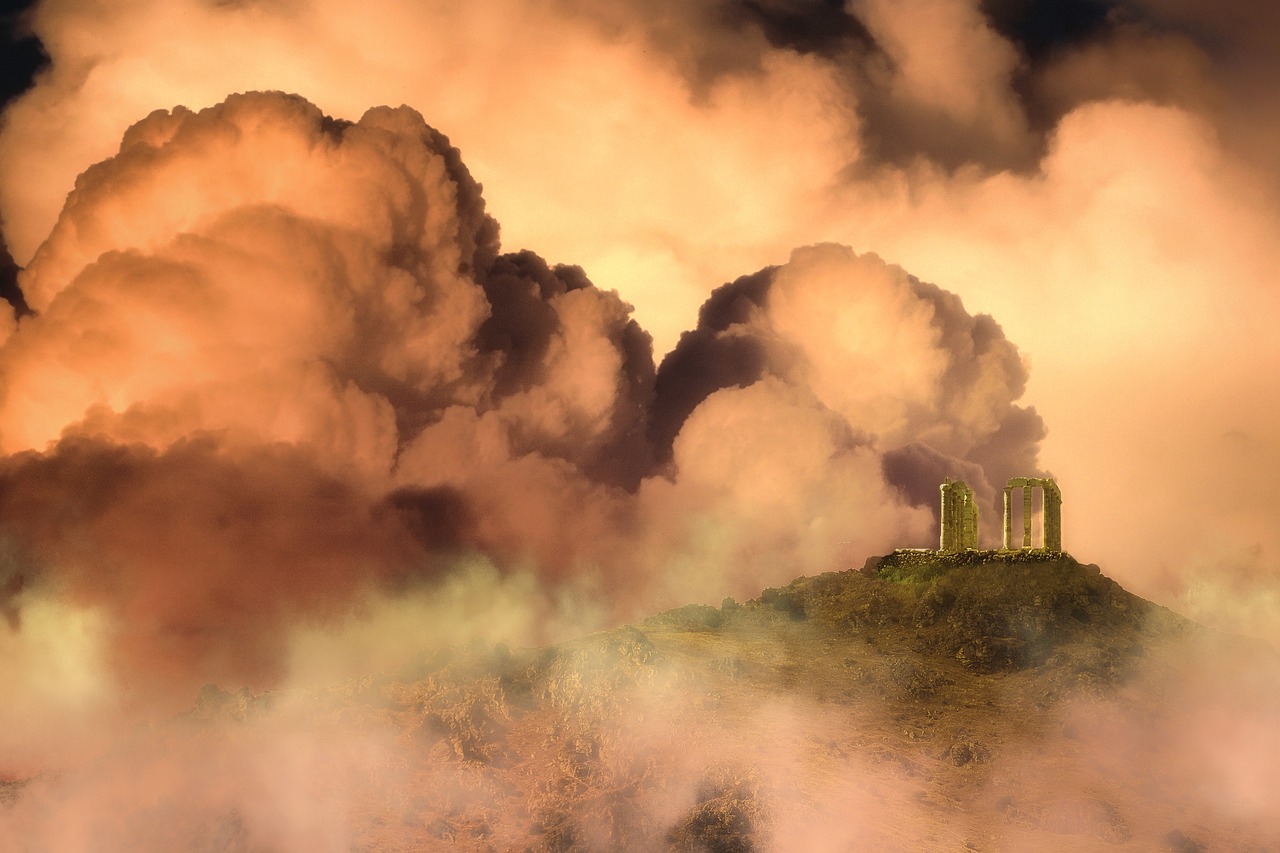
Ancient Astronomical Observations
When delving into the realm of ancient astronomical observations, we uncover a fascinating tapestry woven by civilizations such as the Egyptians, Babylonians, and Mayans. These ancient peoples looked to the skies not just for curiosity's sake but as a means to understand their world, predict events, and align their religious practices with the celestial dance above.
The Egyptians, with their awe-inspiring pyramids and temples, meticulously tracked the movements of the sun and stars. Their complex calendar system, based on the annual flooding of the Nile and the cycles of the stars, allowed them to predict crucial events like the annual inundation of the river, essential for their agricultural practices.
Similarly, the Babylonians, known for their advancements in mathematics and astronomy, developed intricate calendars based on the movements of celestial bodies. Their observations of the stars and planets not only guided their religious ceremonies but also laid the foundation for the zodiac system still used today.
Turning our gaze to the Mayans, we find a civilization deeply intertwined with the cosmos. Their pyramids and temples were aligned with celestial events, such as the equinoxes and solstices, symbolizing their connection to the heavens and the gods. The Mayan calendar, renowned for its precision and complexity, was based on astronomical observations and played a vital role in their religious rituals and societal organization.
These ancient astronomical observations were not merely scientific endeavors but integral parts of these civilizations' religious and cultural practices. By studying the movements of the celestial bodies, these ancient peoples sought to find meaning in the universe and establish a connection between the earthly realm and the heavens above.
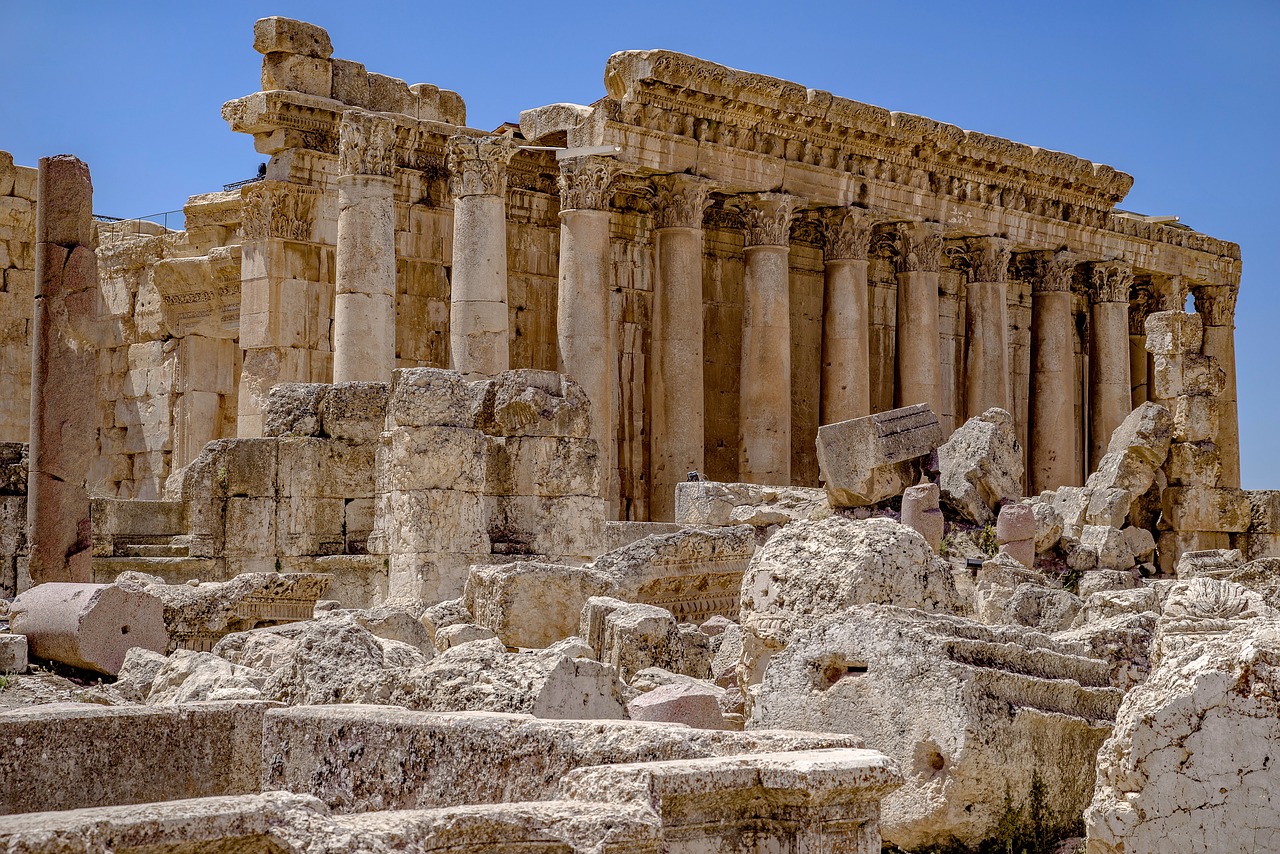
Cosmology in Ancient Mythology
The cosmology of ancient mythology delves into the intricate relationship between celestial bodies and the creation stories of ancient cultures. From the mesmerizing tales of Greek gods residing on Mount Olympus to the cosmic serpent of Norse mythology, ancient myths are rich with celestial symbolism and cosmic narratives that mirror the movements of the stars and planets in the night sky.
Ancient civilizations viewed the heavens as a divine realm where gods and goddesses orchestrated the unfolding of the universe. These celestial beings were often associated with specific planets or constellations, embodying the forces of nature and the mysteries of the cosmos. The alignment of mythological narratives with astronomical events served to explain the origins of the world and the cyclical nature of existence.
For example, in Egyptian mythology, the god Osiris was linked to the constellation Orion, symbolizing rebirth and the afterlife. The alignment of Osiris with the constellation's position in the sky during certain times of the year reflected the annual flooding of the Nile, a vital event for Egyptian agriculture and society. Similarly, the Mayan civilization integrated celestial events into their creation stories, attributing the movements of the planets to the actions of their deities.
Moreover, ancient myths often portrayed cosmic battles between opposing forces of light and darkness, echoing the eternal struggle between day and night, summer and winter. These cosmic conflicts were reflected in the changing seasons and the movements of the celestial bodies, highlighting the interconnectedness of earthly events with the celestial realm.
The cosmological aspects of ancient mythology not only provided explanations for natural phenomena but also served as a moral and spiritual guide for ancient societies. By aligning their beliefs and rituals with the movements of the stars and planets, ancient cultures sought to establish harmony with the cosmos and honor the divine forces that governed the universe.

Sacred Sites Aligned with Celestial Events
Exploring the connections between ancient religious beliefs and astronomical observations, revealing how civilizations integrated celestial events into their spiritual practices and cultural traditions.
Examining how ancient civilizations like the Egyptians, Babylonians, and Mayans observed celestial phenomena to develop calendars, predict events, and align religious ceremonies with astronomical events.
Investigating how ancient myths and creation stories from cultures around the world incorporate celestial elements, portraying gods and cosmic events that reflect astronomical phenomena and celestial bodies.
Discussing the construction of ancient temples, monuments, and structures aligned with solstices, equinoxes, and other celestial events, demonstrating the importance of astronomy in religious architecture and rituals.
Ancient civilizations often built their sacred sites in alignment with specific celestial events, such as solstices and equinoxes. These architectural marvels were not merely structures but cosmic calendars, meticulously designed to honor and interact with the movements of the heavens. Imagine standing in a temple precisely aligned with the rising sun on the summer solstice, feeling the connection between the earthly and celestial realms as the light floods through the sacred space.
One remarkable example of such alignment is the Great Pyramids of Giza in Egypt, constructed with such precision that they align with the cardinal points and exhibit a deep understanding of astronomical principles. These ancient structures served as more than just tombs; they were gateways to the stars, connecting the pharaohs with the gods above.
Exploring how ancient religious practices, such as solstice celebrations, equinox ceremonies, and star worship, were influenced by astronomical observations and celestial symbolism, shaping religious beliefs and practices.
Analyzing the connection between ancient myths, constellations, and deities, illustrating how cultures identified celestial patterns with their gods and heroes, creating a celestial mythology that influenced religious beliefs.
Examining the development of ancient calendars based on astronomical cycles, such as lunar phases and solar movements, and how these calendars guided religious festivals, agricultural activities, and societal events.
Considering how ancient beliefs about the cosmos, celestial bodies, and cosmic order influenced religious philosophies, moral codes, and spiritual practices, shaping the worldview and ethical principles of ancient civilizations.
Reflecting on the enduring influence of ancient astronomical knowledge and religious traditions on modern astronomy, astrology, and cultural beliefs, highlighting the ongoing significance of the intersection between ancient religions and astronomy.
Stay tuned for answers to common queries about the fascinating relationship between ancient religions and astronomy!

Role of Astronomy in Religious Rituals
When delving into the ancient practices of religious rituals, one cannot overlook the pivotal role that astronomy played in shaping these sacred ceremonies. Ancient civilizations meticulously observed celestial events, aligning their religious practices with the movements of the stars and planets. Imagine standing in an ancient temple, witnessing a solstice celebration where the alignment of the structure perfectly frames the setting sun, symbolizing a divine connection between the earthly and celestial realms.
These astronomical observations were not merely passive acts of stargazing; they were integrated into the very fabric of religious rituals. The changing of seasons marked by equinoxes and solstices served as crucial moments for ceremonies and offerings, honoring the cosmic forces believed to govern life on Earth. Picture priests and priestesses conducting rituals under a canopy of stars, invoking the power of the heavens to bless their communities with abundance and protection.
Moreover, the worship of celestial bodies themselves was a common practice in many ancient cultures. The sun, moon, and stars were revered as deities, with temples and altars dedicated to their veneration. Imagine the awe and reverence felt by worshippers as they gazed upon the night sky, seeing not just distant stars but embodiments of divine beings guiding their paths and destinies.
As astronomy intertwined with religious rituals, the very fabric of belief systems was woven with celestial threads. The movements of the heavens dictated the timing of festivals and ceremonies, ensuring that each action taken on Earth was in harmony with the cosmic dance above. Consider the intricate calendars developed by ancient civilizations, meticulously tracking the cycles of the moon and sun to determine auspicious times for planting, harvesting, and honoring the gods.
Ultimately, the role of astronomy in religious rituals was not just about observation; it was about participation in the grand symphony of the universe. By aligning their practices with the celestial rhythms, ancient peoples sought to attune themselves to the higher powers that governed existence, finding meaning and purpose in the cyclical patterns of the cosmos.
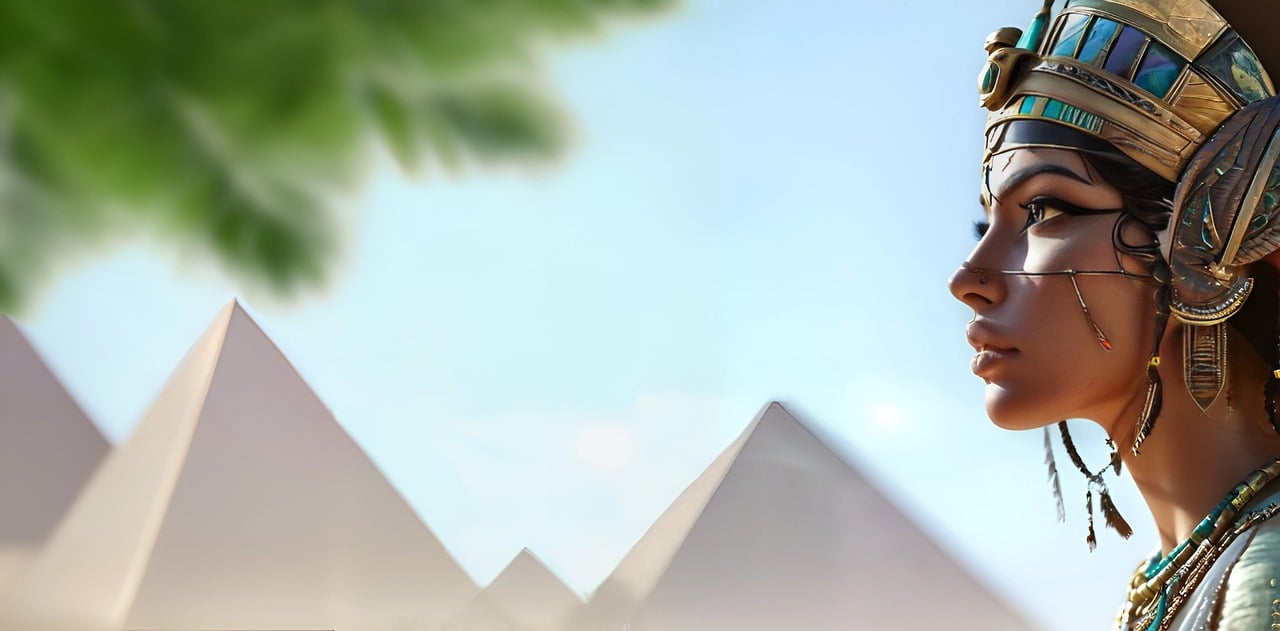
Mythological Constellations and Deities
Mythological constellations and deities have long been intertwined with ancient cultures, shaping their beliefs and practices around the celestial realm. Across various civilizations, the night sky served as a canvas upon which myths and legends were painted, connecting the dots between earthly existence and the heavenly bodies above.
Ancient civilizations such as the Greeks, Egyptians, and Mesopotamians wove intricate stories around the constellations, attributing divine significance to the patterns they perceived in the stars. These celestial configurations were not merely random arrangements of lights in the sky but were seen as representations of powerful deities and heroic figures.
For example, the Greek constellation Orion was associated with the mighty hunter of the same name, while the Egyptian goddess Isis was linked to the star Sirius. These mythological connections between the constellations and deities added a layer of mysticism and reverence to the night sky, infusing it with spiritual meaning and cosmic significance.
Moreover, the alignment of certain constellations with specific gods and goddesses in ancient mythology served as a celestial map guiding religious practices and rituals. The movements of the stars were believed to reflect the actions and attributes of the deities, influencing the timing of festivals, ceremonies, and agricultural activities.
Through the lens of mythological constellations and deities, ancient cultures sought to make sense of the universe, finding echoes of their own stories and beliefs written in the stars above. The celestial realm became a mirror reflecting the divine narratives and cultural identities of civilizations long past, leaving a lasting imprint on the intersection of religion and astronomy.

Astronomical Calendars and Festivals
When delving into the realm of ancient civilizations and their intricate connection to astronomy, one cannot overlook the profound impact of astronomical calendars and festivals. These ancient calendars, meticulously crafted based on celestial cycles such as lunar phases and solar movements, served as the guiding force behind religious festivals, agricultural activities, and societal events.
Imagine the awe and reverence felt by ancient societies as they gazed upon the heavens, meticulously tracking the movements of celestial bodies to create calendars that not only marked time but also dictated the timing of sacred rituals and festivities. These calendars were not mere tools for scheduling events; they were intricate reflections of the cosmic order that governed their religious beliefs and cultural practices.
Through the alignment of these calendars with astronomical phenomena, ancient civilizations were able to synchronize their spiritual celebrations with celestial events, infusing their rituals with a sense of cosmic significance. The changing seasons, the phases of the moon, and the positions of the stars all played a crucial role in shaping the religious calendar, dictating when to plant crops, when to harvest, and when to honor their gods through elaborate ceremonies.
Moreover, these astronomical calendars were not just practical tools for timekeeping; they were symbolic representations of the interconnectedness between the earthly realm and the celestial sphere. Each festival, each celebration was a harmonious dance between the terrestrial and the celestial, a reflection of the belief that the gods themselves orchestrated the cosmic symphony that guided their lives.
As we unravel the intricate tapestry of ancient astronomical calendars and festivals, we begin to appreciate the profound wisdom and spiritual insight of these ancient civilizations. Their reverence for the heavens, their meticulous observations of the celestial bodies, and their intricate calendars all speak to a deep understanding of the interconnectedness of the universe and the divine forces that govern it.
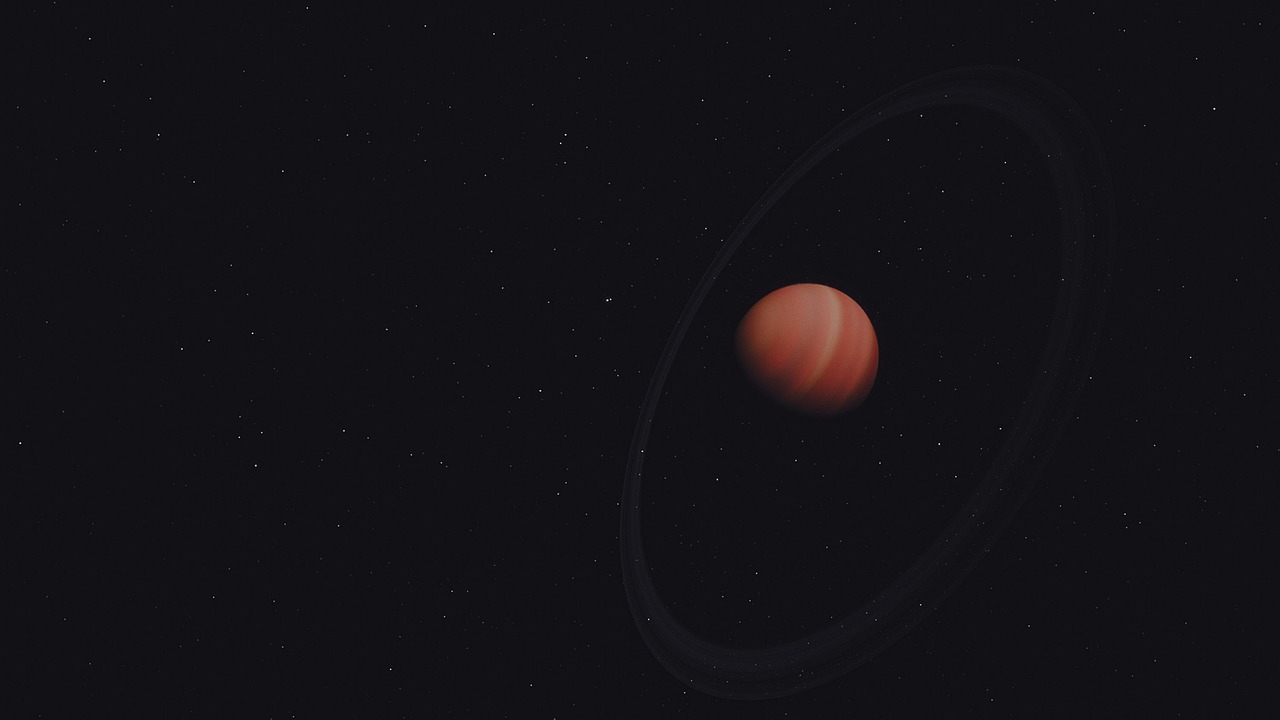
Impact of Astronomy on Religious Philosophy
When we delve into the profound connection between astronomy and religious philosophy in ancient civilizations, we uncover a tapestry woven with celestial threads that shaped the very fabric of belief systems. Imagine standing under the vast night sky, gazing at the twinkling stars and pondering the mysteries of the universe. This contemplation led ancient societies to develop intricate cosmologies that intertwined with their religious beliefs, forming a harmonious blend of celestial observations and spiritual ideologies.
Astronomy, with its ability to track the movements of celestial bodies and predict astronomical events, played a pivotal role in shaping religious philosophies. The cycles of the sun, moon, and stars became symbolic representations of cosmic order and divine power, influencing the moral codes and spiritual practices of ancient cultures. The alignment of temples and sacred sites with specific celestial events reflected the belief in a higher cosmic harmony, where earthly rituals mirrored celestial movements.
Moreover, the study of astronomy fostered a sense of awe and wonder towards the universe, prompting philosophical reflections on humanity's place in the cosmos. Ancient philosophers and religious leaders contemplated the vastness of space, the regularity of celestial motions, and the interconnectedness of all things, leading to profound insights into the nature of existence and the divine.
Through the lens of astronomy, ancient civilizations developed a profound respect for the natural world and its celestial manifestations, instilling a sense of reverence for the cosmic forces that governed their lives. The celestial bodies were not merely astronomical objects but embodiments of spiritual significance, guiding religious practices, moral teachings, and ethical principles.
As we reflect on the impact of astronomy on religious philosophy, we recognize the enduring legacy of ancient beliefs that continue to influence our understanding of the universe and our place within it. The intricate interplay between astronomy and religious thought transcends time and culture, reminding us of the profound wisdom embedded in the celestial tapestry that has shaped human spirituality for millennia.
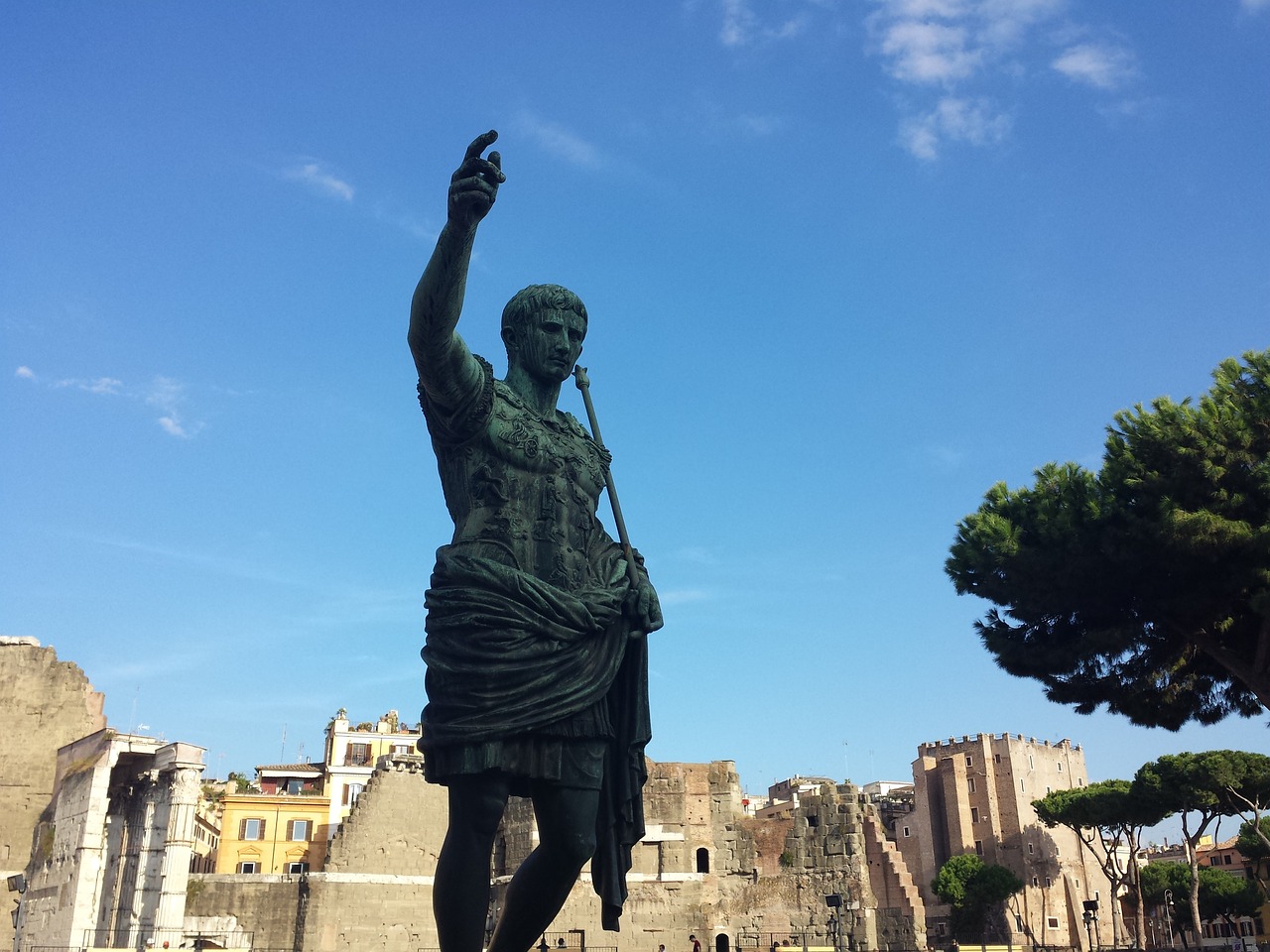
Legacy of Ancient Astronomical Practices
As we look back on the ancient practices of astronomy intertwined with religious beliefs, we can see the lasting impact they have had on modern society. The legacy of ancient astronomical practices continues to shape our understanding of the cosmos, influence cultural traditions, and even impact scientific advancements.
Ancient astronomers laid the foundation for our current knowledge of celestial bodies and their movements. Their meticulous observations and calculations paved the way for the development of modern astronomy, allowing us to explore the universe with greater precision and understanding.
Moreover, the spiritual significance attributed to astronomical events in ancient times still resonates today. Many religious traditions and cultural practices are rooted in the celestial symbolism and rituals established by our ancestors, connecting us to our past and shaping our present beliefs.
Furthermore, the legacy of ancient astronomical practices can be seen in the enduring fascination with astrology. While modern science has debunked many astrological claims, the influence of ancient beliefs in the alignment of celestial bodies on human affairs persists in popular culture and personal beliefs.
Through the study of ancient astronomical practices, we not only gain insight into the scientific achievements of past civilizations but also appreciate the profound impact of their spiritual and cultural connections to the cosmos. The legacy of these practices serves as a reminder of the enduring quest to understand our place in the universe and the mysteries that continue to captivate us.
Frequently Asked Questions
- What is the significance of ancient astronomical observations?
Ancient astronomical observations were crucial for various civilizations to develop calendars, predict events, and align religious ceremonies with celestial occurrences. They provided a deeper understanding of the cosmos and helped shape religious beliefs and practices.
- How did ancient mythology incorporate celestial elements?
Ancient myths and creation stories often included celestial elements, portraying gods and cosmic events that reflected astronomical phenomena. This integration of celestial symbolism helped cultures interpret and connect with the universe around them.
- Why were sacred sites aligned with celestial events?
Ancient temples and monuments were often constructed in alignment with solstices, equinoxes, and other celestial events to symbolize a connection between the earthly realm and the heavens. This alignment played a significant role in religious rituals and ceremonies.
- How did astronomy influence religious rituals in ancient civilizations?
Astronomical observations influenced various religious practices such as solstice celebrations, equinox ceremonies, and star worship. The movements of celestial bodies were seen as divine manifestations, shaping the religious beliefs and rituals of ancient societies.
- What is the relationship between mythological constellations and deities?
Ancient cultures often associated specific constellations with their gods and heroes, creating a celestial mythology that intertwined with religious beliefs. This connection between celestial patterns and deities played a significant role in shaping cultural and religious narratives.






